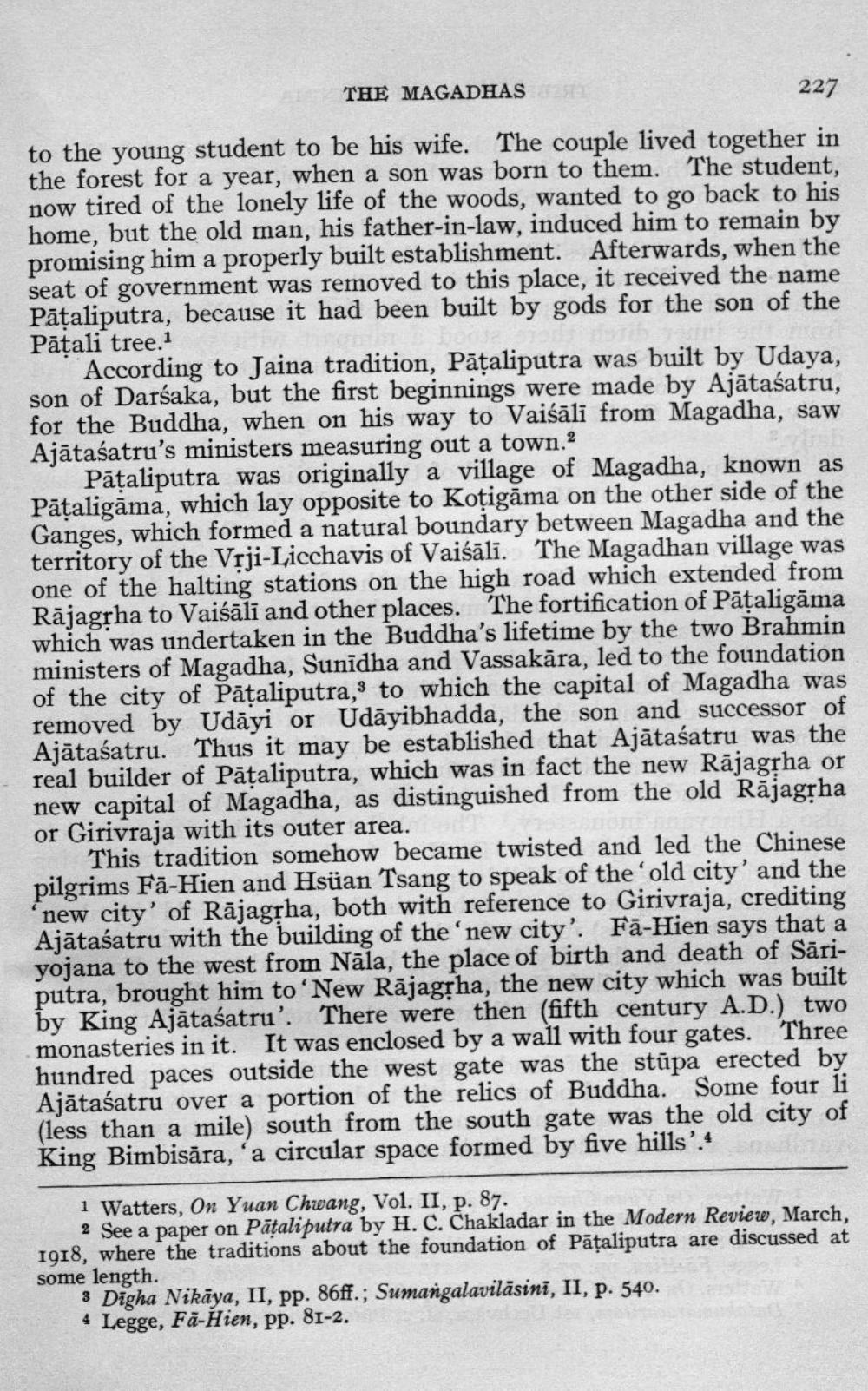________________
THE MAGADHAS
227
to the young student to be his wife. The couple lived together in the forest for a year, when a son was born to them. The student, now tired of the lonely life of the woods, wanted to go back to his home, but the old man, his father-in-law, induced him to remain by promising him a properly built establishment. Afterwards, when the seat of government was removed to this place, it received the name Pataliputra, because it had been built by gods for the son of the Pātali tree.1
According to Jaina tradition, Pāšaliputra was built by Udaya, son of Darśaka, but the first beginnings were made by Ajātaśatru, for the Buddha, when on his way to Vaiśāli from Magadha, saw Ajātaśatru's ministers measuring out a town.2
Pāțaliputra was originally a village of Magadha, known as Pātaligāma, which lay opposite to Kotigāma on the other side of the Ganges, which formed a natural boundary between Magadha and the territory of the Vrji-Licchavis of Vaiśālī. The Magadhan village was one of the halting stations on the high road which extended from Rājagrha to Vaiśāli and other places. The fortification of Pāšaligāma which was undertaken in the Buddha's lifetime by the two Brahmin ministers of Magadha, Sunidha and Vassakāra, led to the foundation of the city of Pāțaliputra,s to which the capital of Magadha was removed by Udāyi or Udāyibhadda, the son and successor of Ajātaśatru. Thus it may be established that Ajātaśatru was the real builder of Pataliputra, which was in fact the new Rājagrha or new capital of Magadha, as distinguished from the old Rājagrha or Girivraja with its outer area.
This tradition somehow became twisted and led the Chinese pilgrims Fä-Hien and Hsüan Tsang to speak of the old city' and the 'new city' of Rājagrha, both with reference to Girivraja, crediting Ajātaśatru with the building of the new city'. Fā-Hien says that a yojana to the west from Nāla, the place of birth and death of Sāriputra, brought him to New Rājagļha, the new city which was built by King Ajātaśatru'. There were then (fifth century A.D.) two monasteries in it. It was enclosed by a wall with four gates. Three hundred paces outside the west gate was the stūpa erected by Ajātaśatru over a portion of the relics of Buddha. Some four li (less than a mile) south from the south gate was the old city of King Bimbisāra, 'a circular space formed by five hills'.4
1 Watters, On Yuan Chwang, Vol. II, p. 87.
2 See a paper on Pätali putra by H. C. Chakladar in the Modern Review, March, 1918, where the traditions about the foundation of Pāțaliputra are discussed at some length.
3 Digha Nikāya, II, pp. 86ff.; Sumangalavilāsini, II, p. 540. 4 Legge, Fä-Hien, pp. 81-2.




